|

THE NODES OF LIFE
1) When was the passion for photography born and when did you choose to make it work?
R. for photography is an innate passion, I would say “genetic”, as a child I helped my grandfather to develop the glass sheets of his Voigtlander bellows that I still keep together with other cameras of my family. At the age of 10 I had my first Kodak as a present and from then on I never stopped shooting. I started working, as often happens with my children, in my father’s company. At the same time I cultivated my passion for photography but then, over time, I realized that it was becoming too expensive a hobby and that it absorbed most of my free time. I decided to turn it into a profession.
2) What can you tell us about your training and your first shots?
R. I had my first technical bases and the taste for framing by my grandfather and my father who is a talented painter. Then I went through the photo club and assistance at some photographic studios, where I refined the technique related to the world of work, so different from that related to the amateur photo world.
My first shots were already directed towards portraits, people, sometimes I tried with landscapes, nature, even photographic hunting, but even if the results were satisfactory, I did not make the emotions that I felt in reality at the time of shooting. So I understood that my way was to photograph people, even if I did not know how.
3) Collaborate with big names in fashion, ranging from clothes to jewels. What does this variety of subjects and products give to your work?
A. First of all, it stimulates creativity, whose routine is the worst enemy and then, by engaging on subjects that have different interpretative needs, you are forced to expand your know-how, thus being able to use the type of light for each product. , the most appropriate squaring cut.
|
|
4) Let’s talk about the relationship between camera and eroticism: how do you conceive and how do you live?
R. Mine is a very personal relationship, I would say intimate. The camera is an extension of my brain, it is the “through” of my emotions, I do not know other ways to try to express to others what I feel. However, I believe that eroticism and vouyerism are somehow linked and the camera represents a wonderful “keyhole” from which to look.
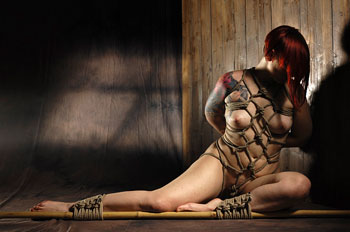
5) The tied body of a splendid woman, at the same time strong and helpless:
how do you transmit these feelings of lightness and power when you shoot?
R. It is what fascinated me in Shibari: the union of formal elegance with an apparently coercive context with an erotic background. The strings impose on the subject a position as vulnerable as it is fascinating, their tension creates lines of strength, the balance with which they are positioned gives a sense of lightness … the mix of these ingredients gives the woman a defenseless but strong image of the aesthetic value, of the power that transmits in counteracting the tension of the hemp that surrounds it.
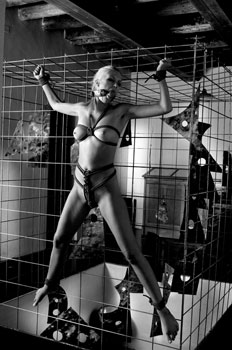 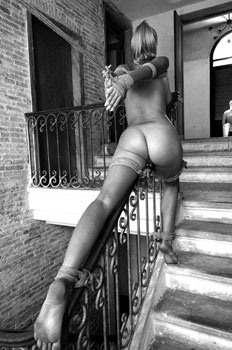
6) How do you choose the subject of photography and what do you expect from the model posing for you?
R. I do not choose him, it is he who chooses me. Surely there are morphological characteristics that fit better than others to interpret this kind of photo, but fundamentally in the encounter with the “right” model I play a passive role, it is she who transmits me that chemistry, that energy that makes that I ask you to pose for me.
It’s not enough for a model to be tall, long-haired and pretty because I feel a desire to photograph her. It has to transmit something to me, like a certain type of personality, attitude, way of expressing itself … sometimes a look is enough!
7) Use both color and black and white. In what occasion do you prefer to use one rather than the other?
A. Color is associated with very precise meanings, so I resort to color when I think that in the context of a certain image the present color emphasizes the meaning I want to give it. . . all know how normally associated with red color is a sexual value. For the most part, however, I do not try to transmit sexual messages in my images, that the models look too “carnal” or that they all taste too “documentary”. I prefer to leave more space to the imagination of the observer and give the subject a more graphic, more aesthetic, removing the model from a situation of nude woman, available, which awakens the male erotic imagery, to fall instead in the role of icon, of symbol of beauty, located outside of time and fashions.
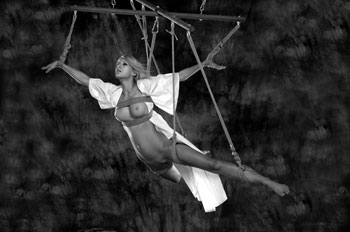
8) 11 bondage that you are looking for is refined, sensual. What do you want to transmit mainly with your shots?
A. Mainly I am interested in transmitting the charm, the intrinsic aesthetics in a situation of domination with an erotic background, experienced as a consensual game and never as a form of supra faction or violence. I am fascinated by the statuariness of the female body, by the beauty that is able to express, if conducted by expert hands, even in the most extreme situations, those canonically less linked to the concept of beauty. . This is a personal challenge for me! When I create an image, I still like to think that it represents for its interlocutor only the prologue of a story, whose fantasy will then be the architect: mine is only a “La”, from which to build one’s own piece of music.
9) We are increasingly talking about fetish in every area, from fashion to art, what are the motivations of this success, in your opinion?
A. I believe it is not a fact of success, but a liberation of thought. In other words, today we have found the courage to make public emotions, feelings, sexual tastes that have always been part of the reality and the male and female erotic imaginary, but of which until a few years ago it was not possible to speak freely. Here is that the fashion system and the media, always short of ideas, have found in the fetish and in the MS finally “cleared” a new source from which to draw, immediately finding feedback in that vast audience in which these drives lie latent.
10) What determines, in your opinion and in your work method, the quality and the emotion of a shot?
R. Professionalism. Professionalism, the real one, is an absolute value, which is difficult to gain over the years, with experience, seriousness, determination and awareness of one’s own ignorance. It is a set of qualities, of which the sa knows to use the camera, perhaps occupies the minor percentage.
 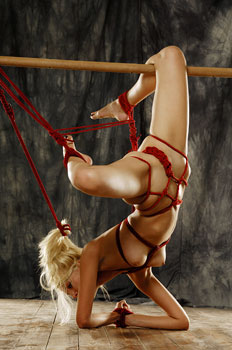
11) How important is the feeling that is established with the model with which you work for the success of the result?
R. More important than that is fundamental, at least for me. I am an emotional person, alive with emotions and I try to convey emotions. . To obtain this result, the one with the model must be a dialogue not a monologue, so he must communicate something to me. . .because it transpires from a picture of me what I feel, the model must be on my wavelength, try the same sensations, otherwise the image is fake and does not speak my language
12) The beauty of a photograph, from your point of view, from what is determined? Is there a secret, or a fundamental element, that must never fail to make a “perfect” shot?
R. We are in the field of image, aesthetics … I believe that today more than ever in this field it is all very subjective. We are no longer in the times of Leonardo, who framed the aesthetic canons of the human body within well-defined measures and proportions. . . we live in an era where everything is artistically allowed, everything is justified and it is considered beautiful what some “authoritative” voices have defined as such.
From a personal point of view I believe that the ingredients of beauty, understood as aesthetic and not emotional, are the quality of light, balance and symmetry.
13) Do you feel changed from career beginnings to today, and if so how?
A. Of course I have changed a lot, like all things in this world I am in perpetual change. If for better or worse I do not know, nor maybe I’m interested in knowing it. I’m only following my path, a path that began many years ago and that I hope to follow to the end, with the enthusiasm and curiosity of a child, the skills and experience of the adult …
(maybe I should have just said: am I much better today?) |
 torna a Press review
torna a Press review

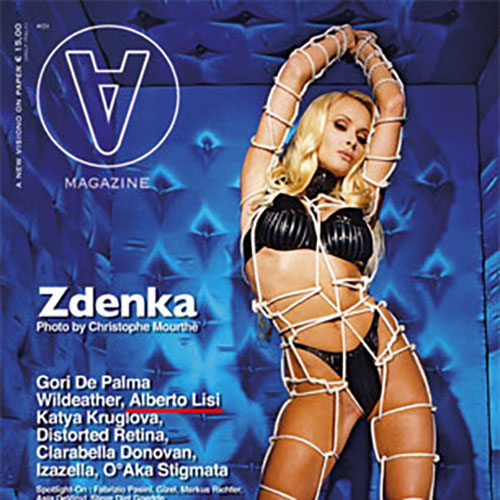








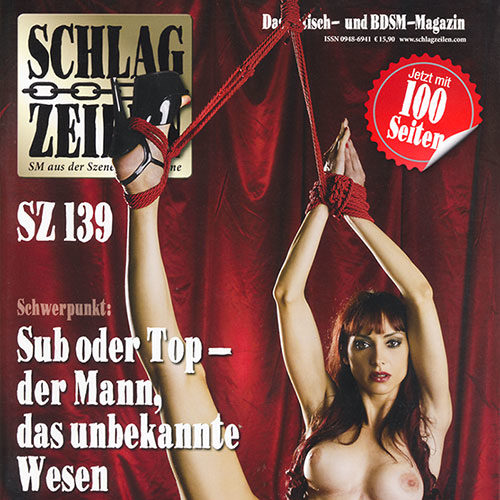
Scrivi la tua!
Commenta questo articolo